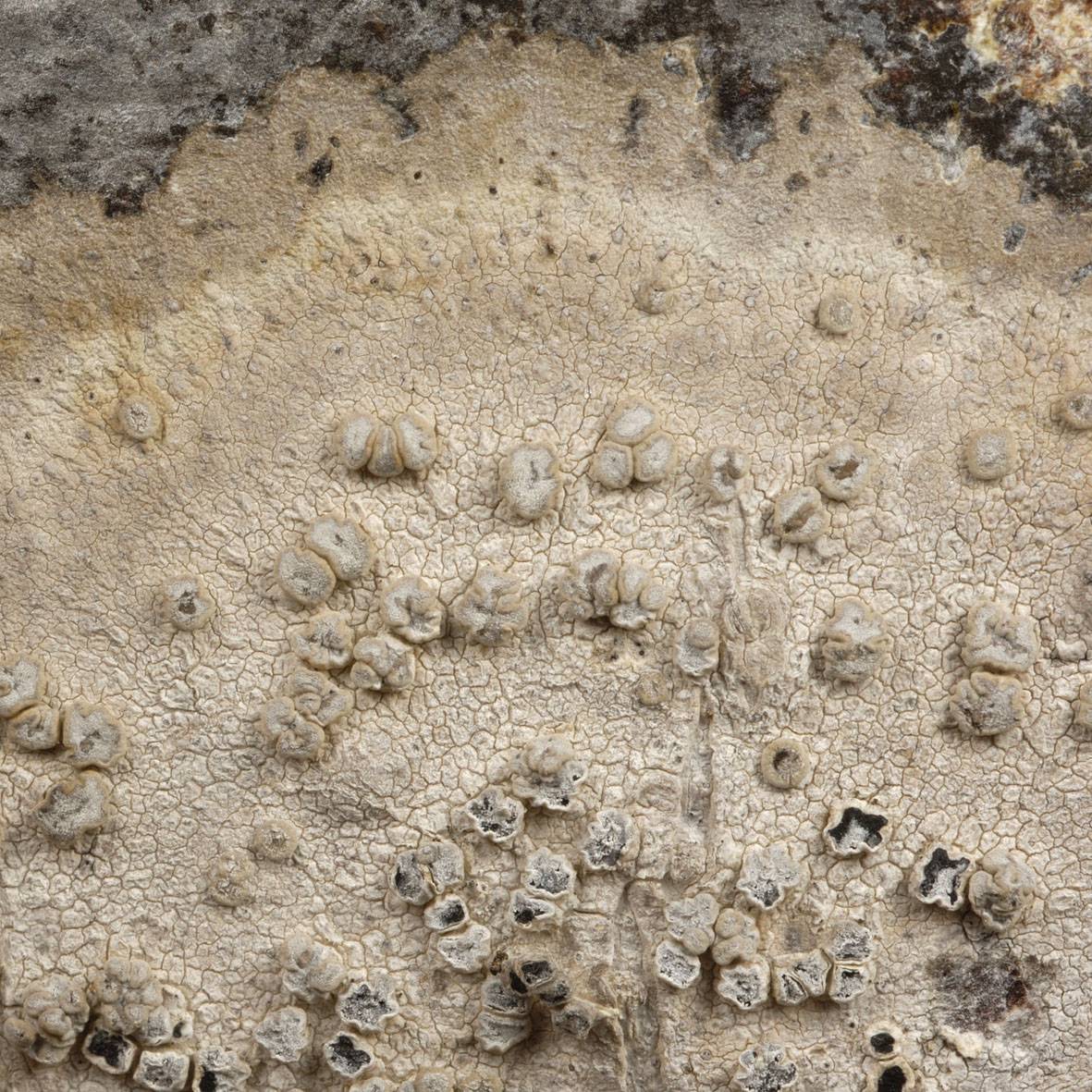
Consortium of Lichen Herbaria
- building a Global Consortium of Bryophytes and Lichens as keystones of cryptobiotic communities -
- Home
- Search
- Images
- Species Checklists
- US States: O-Z >
- US National Parks
- Central America
- South America
- US National Parks
- Southern Subpolar Region
|
Family: Roccellaceae |
Nash, T.H., Ryan, B.D., Gries, C., Bungartz, F., (eds.) 2002. Lichen Flora of the Greater Sonoran Desert Region. Vol 1. Life habit: lichenized Thallus: crustose, effuse sometimes slightly bullate, rimose surface: usually creamy-white, smooth, usually slightly pruinose, soredia often developed cortex: with anticlinally arranged hyphae medulla: white, chalky photobiont: primary one a Trentepohlia, secondary photobiont absent prothallus: when free-growing byssoid, brown; when contiguous crust-like and black Ascomata: apothecioid, numerous to absent, solitary, circular in outline, sessile or immersed; disc: exposed, convex or rarely flat, white with a smooth, pruinose layer; thalline exciple: often undulating or strongly undulating, with algae and cortex; proper exciple: a thin parathecium; epithecium: brown with intertwined and branched paraphysoids; hymenium: 50-140 µm thick; paraphysoids: parallel, sparsely branched, hyaline, 1 µm diam.; hypothecium: dark-brown (carbonaceous), not extending down to the substrate asci: clavate, 70-120 x 15 µm ascospores: fusiform, curved, hyaline, 3-septate; walls: smooth Conidiomata: solitary, immersed, dark-brown, 0.1 mm diam conidia: filiform, curved or semi-circled, hyaline, 10-16 µm long less than 1 µm thick Secondary metabolites: orcinol depsides Geography: coastal regions of Mediterranean and subtropical climates Substrate: on bark or rock. |
Powered by Symbiota









